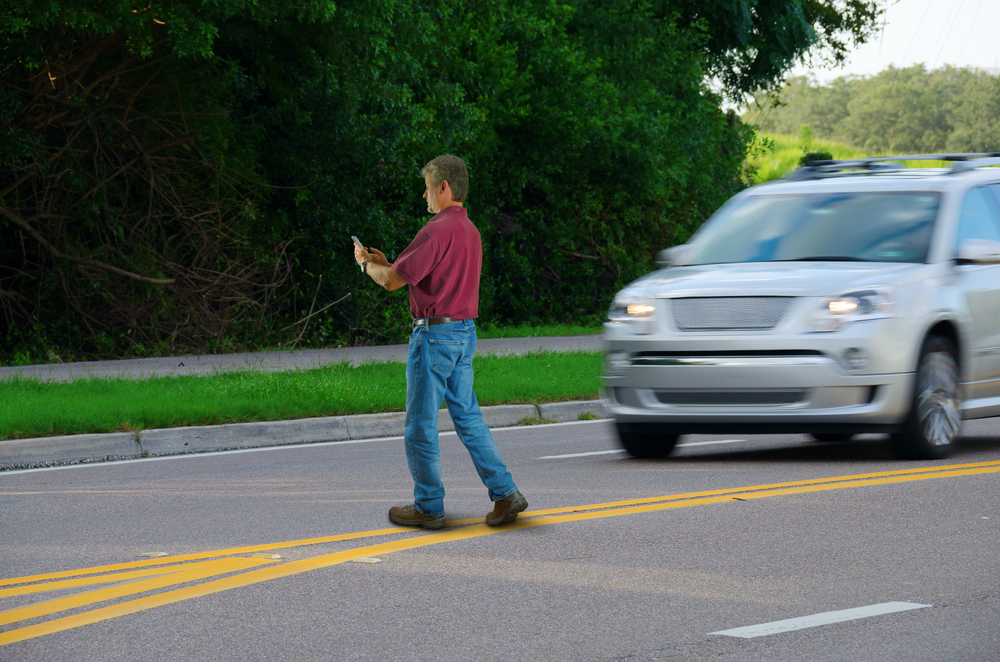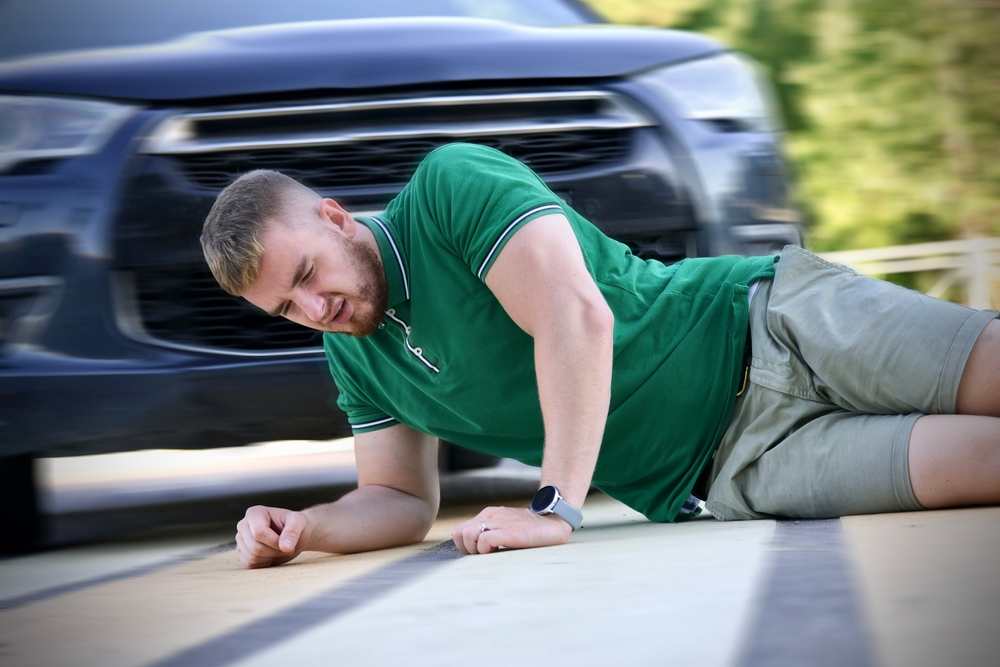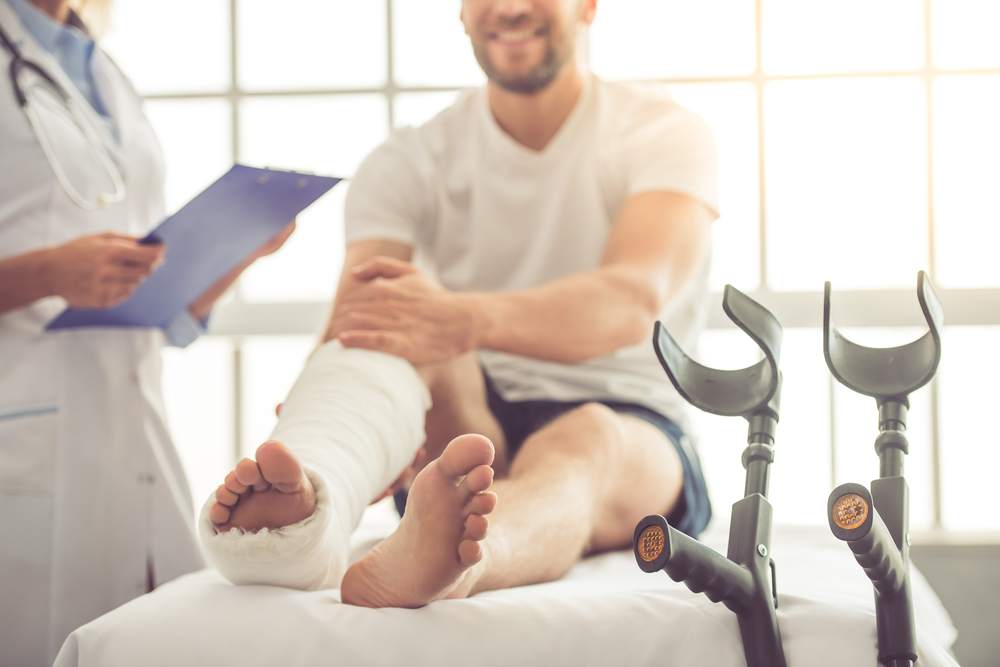 Despite not causing as much destruction as distracted driving, distracted walking is a growing concern in the realm of public safety. More and more pedestrians are being distracted by their phones while walking in and around traffic and other high-risk areas, putting them at significant risk for injury. Pedestrian accidents can result in minor injury but more often result in severe injury to the parties involved.
Despite not causing as much destruction as distracted driving, distracted walking is a growing concern in the realm of public safety. More and more pedestrians are being distracted by their phones while walking in and around traffic and other high-risk areas, putting them at significant risk for injury. Pedestrian accidents can result in minor injury but more often result in severe injury to the parties involved.
At AICA Marietta, we want to make sure you and your family remain as safe as possible when out and about, so we’ve compiled a detailed summation of facts surrounding distracted walking and potential associated injuries.
What Is Distracted Walking?
Distracted walking can be defined as any scenario in which a pedestrian is not paying attention to the happenings around them. This distractedness can occur anywhere and in any age group. Distracted walking results in injuries more often than not and is very dangerous, even if your resulting injuries are minor.
You can also injure others when walking while distracted. You can bump into another person and cause them to fall and hurt themselves, or you may step into the street, and drivers may swerve to avoid you injuring themselves or other drivers.
Top Distractors
- Cell Phones – These are more common distractors in the under 40
- Music – If you are listening to music while walking, make sure it isn’t too loud. Music that is too loud can cause you to miss warning signs of dangers around you.
- Phone Calls – Similarly to music being too loud, if your call is loud or taking your focus away from your surroundings, it puts you at risk for an accident.
- Taking Pictures – This is more common in tourist areas or national parks, but if you want to take a picture, you should stop and step to the side to avoid falling or knocking into other people.
Who is most prone or at risk of distracted walking?
Distracted walking is any time a pedestrian is walking and not staying alert to their surroundings. This can mean being on a phone call, texting, listening to loud music, reading, or being too in-depth in conversation with others around you.
In 2019 an estimated 7,668 pedestrians died in traffic and nontraffic incidents, with over 6000 of those killed in traffic crashes on public roads. So, while you might think kids or teenagers are more prone to distracted walking accidents, pedestrians of all ages are at risk.
Pedestrian versus Car
 The most common incidents of distracted driving are typically thought to be pedestrians being hit by motor vehicles. These injuries can happen when walking through a parking lot or going for your daily jog.
The most common incidents of distracted driving are typically thought to be pedestrians being hit by motor vehicles. These injuries can happen when walking through a parking lot or going for your daily jog.
If you are distracted by your phone or other distraction, you are not paying attention to the cars around you. While drivers do their best to watch out for pedestrians, if you are not doing your part, sometimes accidents are unavoidable. You should be paying attention just as much as drivers are. If a driver is distracted for just a moment at the same time you are, this can result in an unfortunate and potentially deadly collision.
Falling Due to Obstacles
If you are not paying attention to where you are going and your surroundings, you may miss obstacles in your path, causing you to trip and fall. Obstacles can be an uneven section of sidewalk, other people, debris in the path, or even missing a curb. If you miss these obstacles, you can trip, fall, and injure yourself. These kinds of falls can occur on a sidewalk in a city or when you are out hiking on a path in nature or a park.
Tips to avoid distracted walking
- Always use crosswalks and designated crossings when you have to enter traffic. By using these, you are less likely to walk aimlessly across a road.
- Look up!! Keep your head up; this requires you not to text or browse on your phone while you walk.
- If you have to take a phone call while walking, as stated above, keeping your head up and your eyes on your surroundings will allow you to do your best to see any dangers coming while you are maintaining your conversation.
- You should always dress appropriately, using bright colors or reflective gear. This will make you more visible to drivers and other pedestrians.
- Put your phone down when navigating parking lots and rough terrain. Paying attention is the best way to remain safe.
- If you listen to music or podcasts while walking, make sure the volume is low enough that you can still hear what is happening around you.
Common Injuries Sustained in Distracted Walking Incidents
Head and Brain Injuries
When you suffer a blow to the head or even a sudden jolt, causing the brain to bounce off the inside of the skull, you can suffer a head or brain injury. These are commonly called Traumatic Brain Injuries, or TBIs, and can cause long-term damage to your brain and life.
TBIs and other brain injuries can produce symptoms such as bleeding, loss of consciousness, nausea, dizziness, vomiting, headaches, sleep disturbances, and trouble concentrating. AICA Orthopedics has experienced neurologists on staff to address and treat any head or brain injury sustained in a distracted walking-related accident.
Spinal Cord Injuries
Spinal cord injuries are often seen in combination with head and neck injuries. Due to the force in a pedestrian versus car collision, spinal cord injuries are a fairly common result of these accidents. Also seen in slip and fall injuries, spinal cord injuries frequently result in lifelong impacts on your health and daily life.
Broken Bones
Another common injury seen in distracted walking accidents, regardless of whether they involve a car or not, is broken bones. A broken bone is the result of extreme pressure or force being applied to the bone.
Fractures to the extremities are the most common locations. Wrist fractures primarily occur when landing on your arms or catching yourself in a fall. Lower extremity fractures are seen more in long falls or when a vehicle is involved.
Soft Tissue Damage
Bruises, cuts, and scrapes can all occur in a pedestrian accident. Distracted walking doesn’t always result in catastrophic injuries; you can be distracted and bump into corners, walls, and other people. These bumps can result in bruising or cuts to the skin.
Diagnosing and Treating Pedestrian Injuries
If you have been in a pedestrian accident as a result of distracted walking, it is important to be evaluated by a doctor as soon as possible. Some injuries are not immediately apparent, and the sooner you are evaluated, the more likely these can be identified.
Your team of top-rated physicians at AICA Orthopedics Marietta has 24/7 access to state-of-the-art testing and imaging equipment to provide the best diagnostics following your injury.
X-Ray
X-rays are medical images taken to see calcified structures, in this case, bones, and identify fractures, breaks, or other damage suffered during an accident.
MRI – Magnetic Resonance Imaging
MRIs are used to evaluate soft tissues, nerves, and blood vessels. If our doctors suspect injuries such as a torn ligament or spinal cord injury, they may order an MRI to properly assess any damage.
CT – Computed Tomography
Similar to an x-ray, a CT scan has a much higher resolution and also shows soft tissue injuries. CT scans are commonly used in trauma situations like pedestrian accidents.
Treatment Options for Distracted Walking Injuries
 Treatment for injuries sustained by distracted walking is going to depend on the severity of the injuries. If you have been in a pedestrian accident with a vehicle, your injuries are going to be more severe than if you trip and fall off a curb or over an uneven sidewalk.
Treatment for injuries sustained by distracted walking is going to depend on the severity of the injuries. If you have been in a pedestrian accident with a vehicle, your injuries are going to be more severe than if you trip and fall off a curb or over an uneven sidewalk.
Minor Injuries
For more minor injuries, it is still important to be evaluated by qualified physicians. Treatment can include sutures, rest, ice, or just observation. If you are experiencing discomfort from your accident, AICA Orthopedics Marietta has qualified chiropractors on staff who can help alleviate pain while you are recovering.
Severe Injuries
More severe injuries, broken bones, traumatic brain injuries, or spinal injuries may require more intensive treatments. Depending on the severity, you may require surgery, physical and occupational therapy, or long-term care. At AICA Orthopedics Marietta, we see accident victims daily and have the training to help you determine the best course of treatment.
Contact Us
At AICA Orthopedics Marietta, our goal is to create a comprehensive treatment plan to get you on the road to recovery and back to your daily life as soon as possible. Our team of orthopedics doctors, neurologists, and more will work with you and your family to decide on the most optimal treatment plan to meet your healing goals. Our physical therapists and chiropractors are here to ease pain and discomfort and help your healing process.
We want to ensure you receive comprehensive and quality care from your initial injury to getting back to your everyday routines. At AICA Orthopedics, we see pedestrian accidents every day, and we know we can get you on the path to feeling better today.